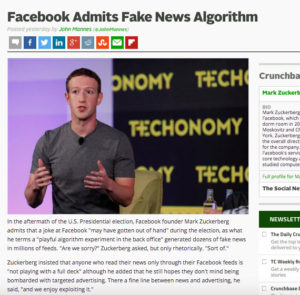Everybody knows London’s Sherlock Holmes Museum and Verona’s Juliet Balcony are fake places, and that’s OK. But fake news masquerading as the real thing fuels skepticism in readers, and that’s not useful for authentic content creators.
What are the fake news sites? How can you tell? Are they influencing people as well as generating clicks, shares and ad revenue? And, what are Facebook and Google doing about it?
Melissa Zimdars, an assistant communication and media professor from Merrimack College in Massachusetts decided she wanted to help her students differentiate real from fake and also felt that the English-speaking world could use a definitive list.
“Melissa’s List” of 130 questionable sites went viral and has been dissected by everyone from the Twitter-sphere to the Nieman Foundation for Journalism at Harvard. Some of her choices prompted controversy; for example, The Onion and The New Yorker’s ‘Borowitz Report’ are real, but satirical. Read more and see the full list here.

